The article “Grave of Female Scythian Warrior Found in Ukraine” written by Ingvar Nord was first published in the Ancient Origins venue on September 1, 2018. Kindly note that article fails to mention the Iranian connection of the Amazons as well as the Scythians and Sarmatians/Alans in particular – instead the author makes reference to a vague characterization of these having been “Indo-European-speaking herders” which fails to distinguish between Celtic, Italic, Balto-Slavic, Germanic, Illyrian, Hellenic, Armenian, Dacian, Tocharian, and Indian (Bharat), and Iranian peoples. For the Iranian Iranian identity of the Scythians, Sarmatians and Alans readers are referred to the following sources:
The Amazons were essentially of Iranian stock as these were of the above noted Iranian peoples. Readers are referred to the following sources on the Amazons:
There are also archaeological reports pertaining to excavations of Amazon warrior women in Iran – see for example:
- Farrokh, K., & Karamian, Gh. (2018). Weapons in the tombs of Parthian Era Women in Northern Iran: A Preliminary Report. Fezana Journal (Publication of the Federation of Zoroastrian Associations of North America), Vol. 32, No.3, Fall/September, pp. 18-21. – For more on the weapons found in the graves of Parthian women fighters in the graves at Vestmin consult pages 67-68 in: Karamian, Gh., Farrokh, K., Kiapi, M.F., Nemati, H. (2018). Graves, crypts and Parthian weapons excavated from the gravesites of Vestemin. HISTORIA I SWIAT, No.7, pp. 35-70.
Kindly note that Ingvar Nord’s article has been slightly edited below – also: two images and accompanying captions inserted below do not appear in the original Ancient Origins posting.
========================================================================================
Ukrainian TV Channel, ZIK has reported the discovery of a burial of a female Scythian warrior – who is thought to have been part of the fierce all-female tribe of Amazons mentioned by the Greek epic writers and then the historian Herodotus. The find of a skeleton accompanied by grave goods and weapons associated with this noble fighting class has been found by a group of archaeologists, students and volunteers who conducted an archaeological expedition to Mamai Hill, Ukraine.
Findings at the grave
The burial of a female Scythian warrior is located in the Great Znamyanka, Kam’yansko-Dniprovskyi District, Zaporozhye region of Ukraine. The burial place that has been found is aged around 2400 years. Due to the location, age, and the grave goods that have been found, it has been assessed that this is likely to be the grave of a member of the Amazon warrior tribe , thought to be closely related to the Scythians, that legend claims lived and roamed in in various locations around the region.
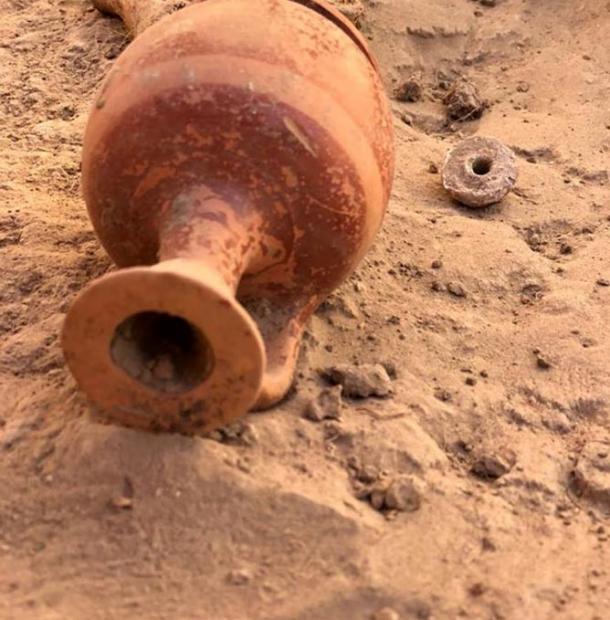
A diminutive lekythos, a small jar for keeping aromatic oils and perfumes, was found in the grave (Image: Mamia Gora).
The excavators of the Scythian lady buried in Mamai Hill have also recovered a miniature jar – or lekythos to the Greeks, in which contemporary women of noble origin kept perfumes or aromatic oils. This was one of the indications that the grave was of a high-status woman. Other items found in the burial are exquisite bronze lanterns, bronze arrow heads and two lead spinners. The arrow heads are indicative that the woman was a warrior.
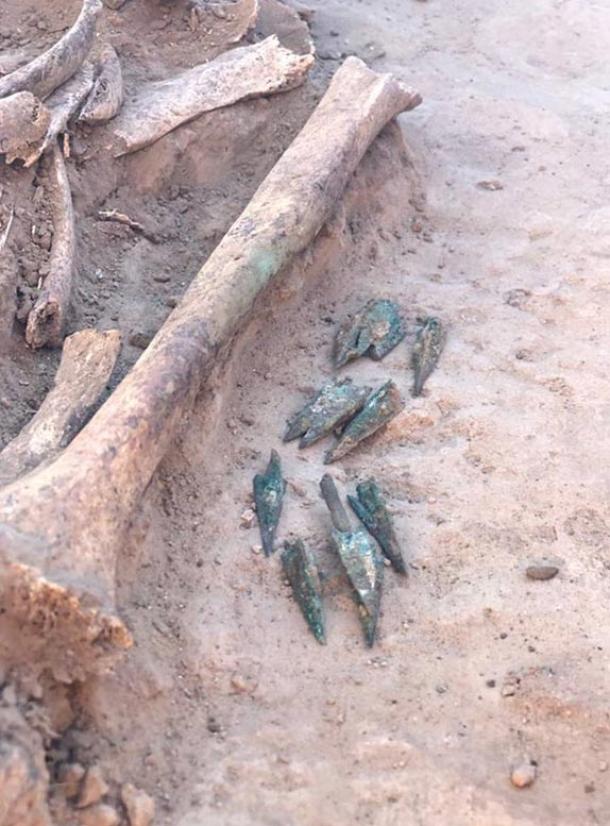
Arrow heads were found by the skeletal remains of the noblewoman (Image:Mamia Gora).
Warrior was Still a Lady
A well-preserved bronze mirror was also found. As well as serving the aesthetic purpose, mirrors also had a certain sacred function for the ancient peoples and were related to the ‘otherworld’ of the afterlife. That is why this item sometimes occurs, in particular in women’s Scythian burials.
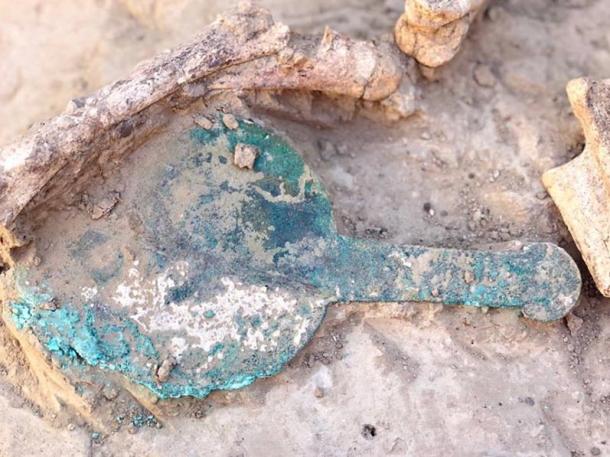
Bronze mirror found in the Amazon burial site (Image:Mamia Gora).
The distinct outline of the funeral pit was noticed by archaeologists after the trench was removed by a bulldozer. From that moment on, the more delicate manual excavation and cleaning around the area of the grave took place.
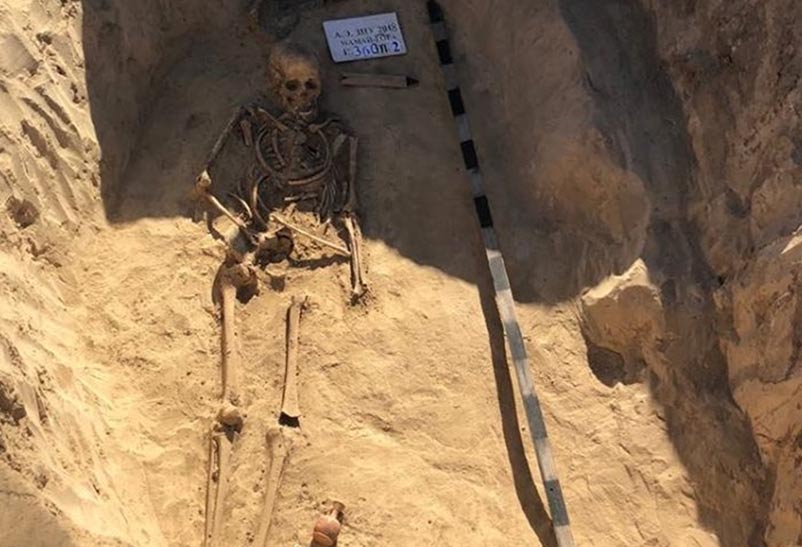
Grave of a female Scythian warrior found in Ukraine (Source: Zik).
It remains for the anthropologists to determine just how old this Amazon was when she died and what was the cause of death. Whether this was a warrior that died in battle, from illness or even natural causes remains to be found out.
Other Amazon Warriors
These are not the first finds of warriors suspected to be Amazons. According to the New York Times , similar graves were found by Russian and American archaeologists among Sarmatian tribes at Pokrovka. The Sarmatians in Herodotus come from the union of Scythians with the Amazons. From the grave goods and other evidence, the first among this race were women warriors. The burials appeared to be associated first with the Sauromatians and then the early Sarmatians. These were Indo-European-speaking herders who lived on the steppes in the sixth to fourth century BC, and fourth to second centuries BC, respectively.
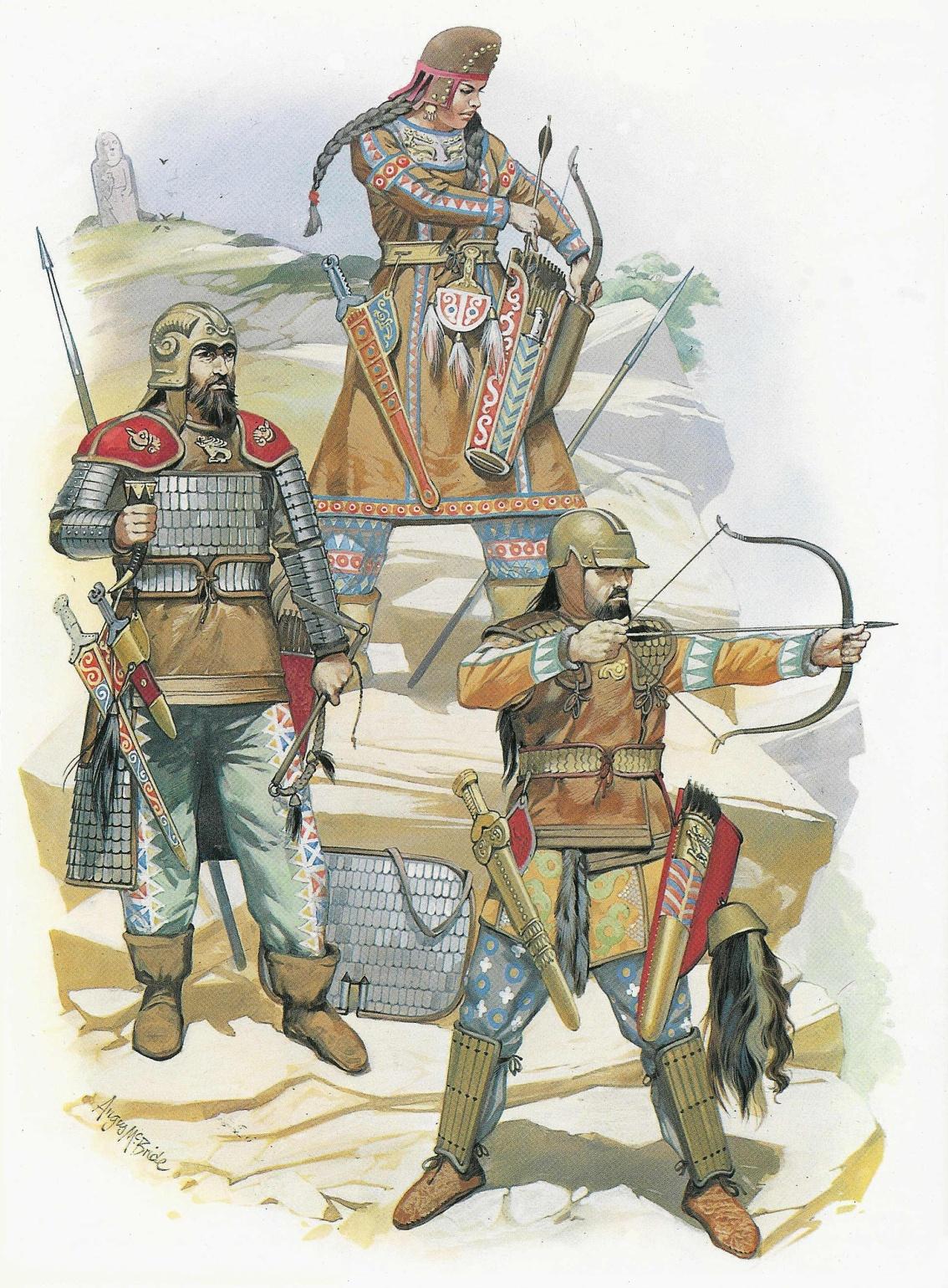
A reconstruction by Cernenko and Gorelik of the north-Iranian Saka or Scythians in battle (Cernenko & Gorelik, 1989, Plate F). The ancient Iranians (those in ancient Persia and the ones in ancient Eastern Europe) often had women warriors and chieftains, a practice not unlike those of the contemporary ancient Celts in ancient Central and Western Europe. What is also notable is the costume of the Iranian female warrior – this type of dress continues to appear in parts of Luristan in Western Iran.
But the most striking discovery at Pokrovka has been the skeletons of women buried with swords and daggers . One young woman, bow-legged from a riding horseback, wore around her neck and amulet in the form of a leather bag containing a bronze arrowhead. At her right side was an iron dagger; at her left, a quiver holding more than 40 arrows tipped with bronze. As noted by Jeannine Davis-Kimball, a leader of the excavations:
“These women were warriors of some sort … They were not necessarily fighting battles all the time, like the Genghis Khan, but protecting their herds and grazing territory when they had to. If they had been fighting all the time, more of the skeletons would show signs of violent deaths.”
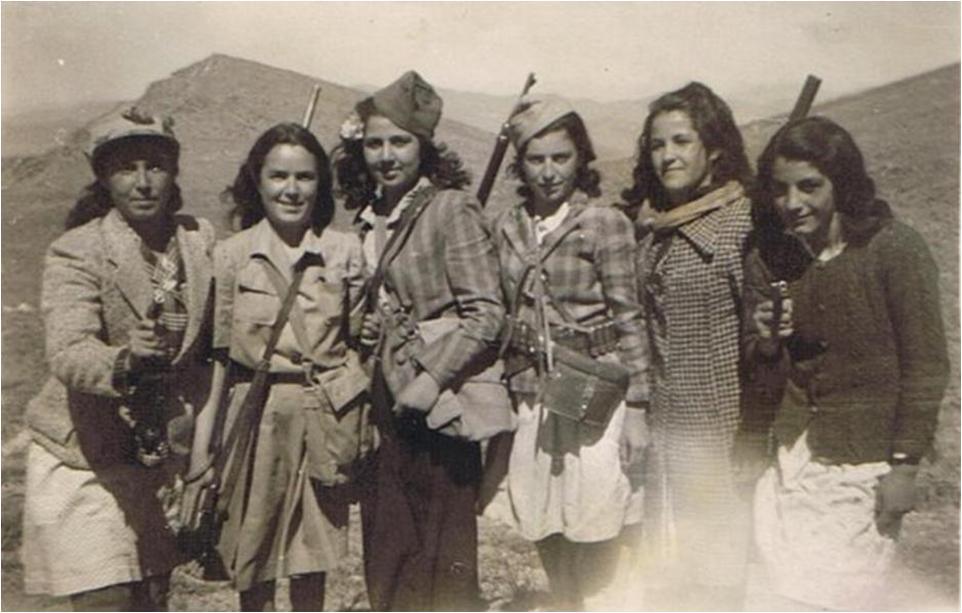
Iranian women from Malayer (near Hamedan in the northwest of Iran) engaged in target practice in the Malayer city limits in the late 1950s. The association between weapons and women is nothing new in Iran; Roman references for example note of Iranian women armed as regular troops in the armies of the Sassanians (224-651 CE).



